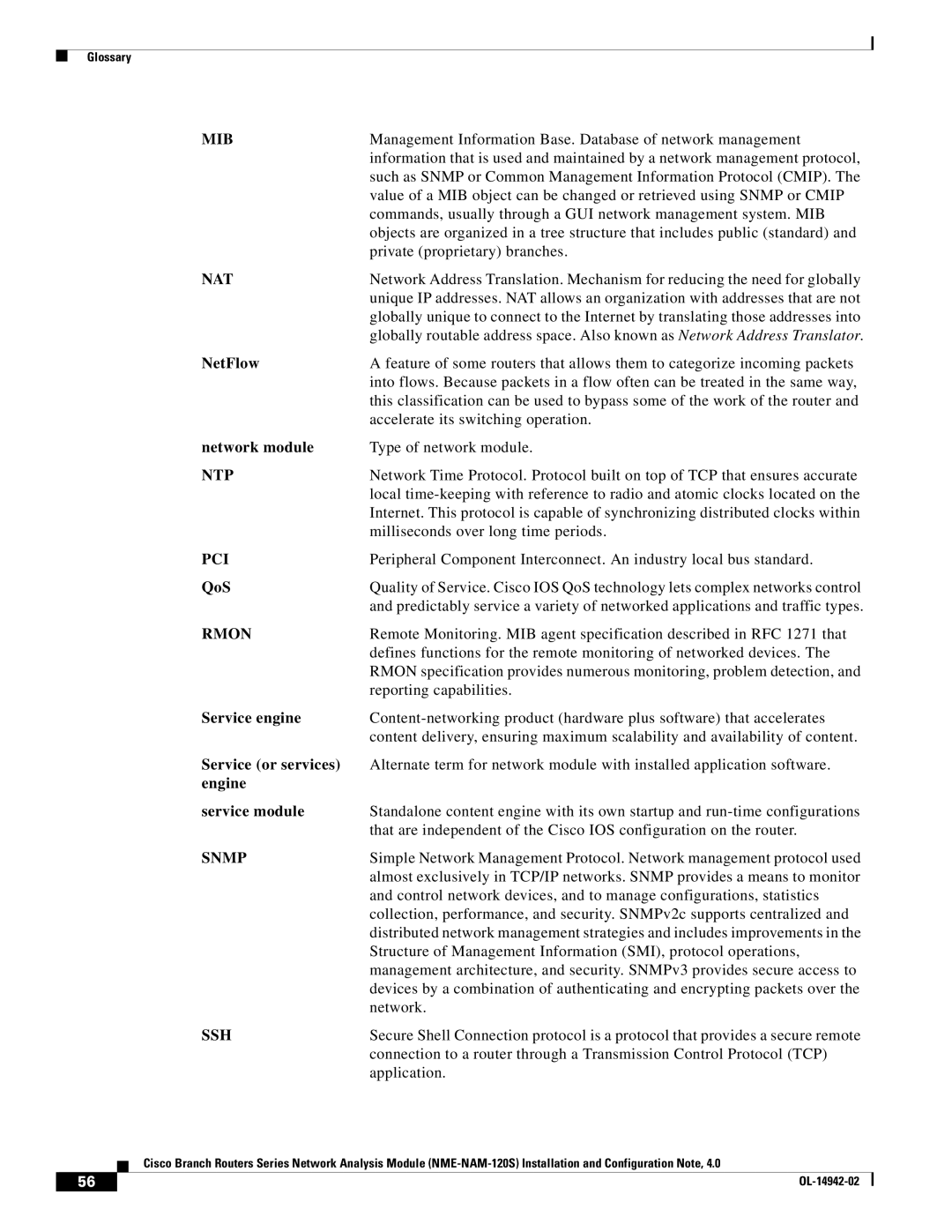
Glossary
MIB | Management Information Base. Database of network management |
| information that is used and maintained by a network management protocol, |
| such as SNMP or Common Management Information Protocol (CMIP). The |
| value of a MIB object can be changed or retrieved using SNMP or CMIP |
| commands, usually through a GUI network management system. MIB |
| objects are organized in a tree structure that includes public (standard) and |
| private (proprietary) branches. |
NAT | Network Address Translation. Mechanism for reducing the need for globally |
| unique IP addresses. NAT allows an organization with addresses that are not |
| globally unique to connect to the Internet by translating those addresses into |
| globally routable address space. Also known as Network Address Translator. |
NetFlow | A feature of some routers that allows them to categorize incoming packets |
| into flows. Because packets in a flow often can be treated in the same way, |
| this classification can be used to bypass some of the work of the router and |
| accelerate its switching operation. |
network module | Type of network module. |
NTP | Network Time Protocol. Protocol built on top of TCP that ensures accurate |
| local |
| Internet. This protocol is capable of synchronizing distributed clocks within |
| milliseconds over long time periods. |
PCI | Peripheral Component Interconnect. An industry local bus standard. |
QoS | Quality of Service. Cisco IOS QoS technology lets complex networks control |
| and predictably service a variety of networked applications and traffic types. |
RMON | Remote Monitoring. MIB agent specification described in RFC 1271 that |
| defines functions for the remote monitoring of networked devices. The |
| RMON specification provides numerous monitoring, problem detection, and |
| reporting capabilities. |
Service engine | |
| content delivery, ensuring maximum scalability and availability of content. |
Service (or services) | Alternate term for network module with installed application software. |
engine |
|
service module | Standalone content engine with its own startup and |
| that are independent of the Cisco IOS configuration on the router. |
SNMP | Simple Network Management Protocol. Network management protocol used |
| almost exclusively in TCP/IP networks. SNMP provides a means to monitor |
| and control network devices, and to manage configurations, statistics |
| collection, performance, and security. SNMPv2c supports centralized and |
| distributed network management strategies and includes improvements in the |
| Structure of Management Information (SMI), protocol operations, |
| management architecture, and security. SNMPv3 provides secure access to |
| devices by a combination of authenticating and encrypting packets over the |
| network. |
SSH | Secure Shell Connection protocol is a protocol that provides a secure remote |
| connection to a router through a Transmission Control Protocol (TCP) |
| application. |
Cisco Branch Routers Series Network Analysis Module
56 |
| |
|
